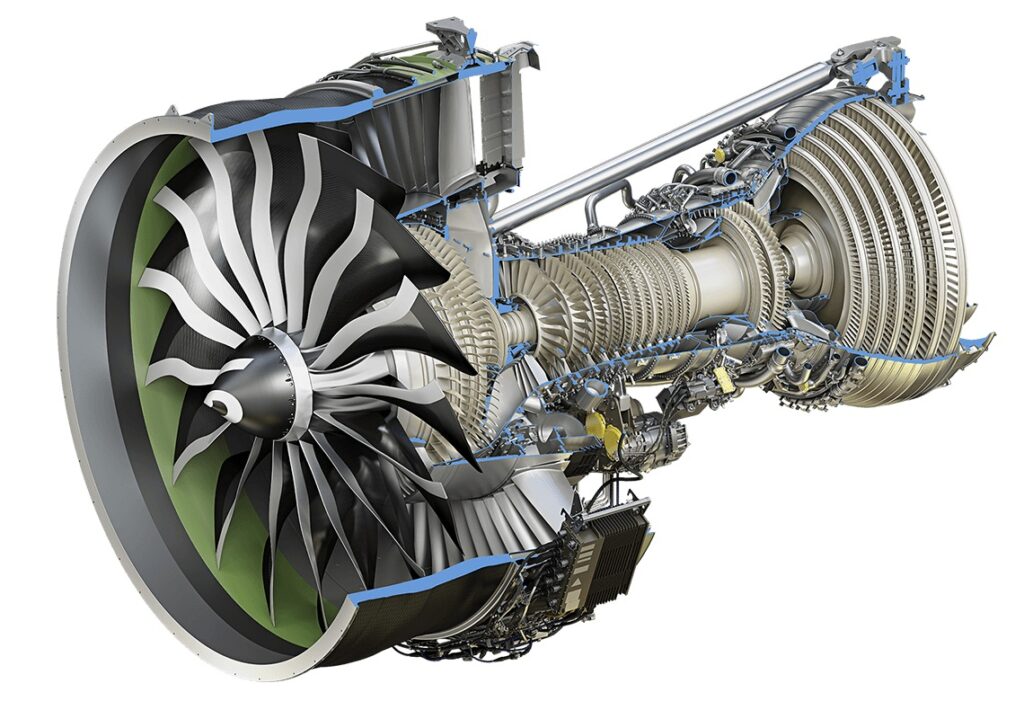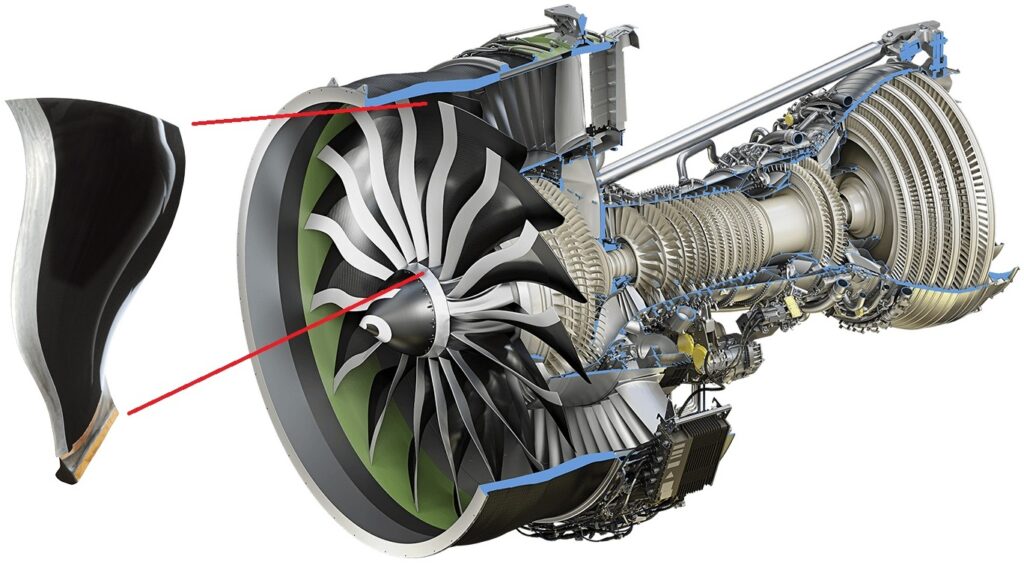Boeing continues its test runs for the 777-9, the most improved model of the 777 series. The Boeing 777-9 model is larger than all previous generation 777s. It has longer range and payload capacity. All this means it needs higher power. GE Aviation will produce the engines that will power the airplane. The engine, called GE9X, was specially developed for the Boeing 777-9 model.

The engine is a winner in several disciplines. Its front fan spans a full 11 feet in diameter (3.35 meters), a world record. It’s the same width as the Boeing 737 fuselage. Another record-breaking feature is its thrust, which occurred during an engineering test on Nov. 10, 2017, at GE’s outdoor test facility in Peebles, Ohio. Guinness World Records announced that the engine clocked in at 134,300 pounds (60,917 kgf) of thrust during a test run. Its ability to produce this level of thrust means it can easily handle the nominal thrust of 100,000 lbs (45,360 kgf) expected from it.
The GE9X engine has a by-pass ratio of 10:1. This means that, only 1/10 of the air sucked from the front of the engine goes into the engine to burn the fuel. The remaining 9 out of 10 are wrapped around the engine and blown exactly from the rear without ever entering the engine. In other words, most of the thrust is generated by the big fan in front of the engine, which we can all see with the naked eye.

Another radical innovation in the GE9X engine is the decreasing number of fan-blades. The number of blades, which was 22 in the first generation model of the engine, was reduced to 18 in the 2nd generation and 16 in the 3rd generation GE9X model. The decrease in the number of blades as the power of the engine increases is a true engineering feat, because this means that the carrying capacity of each blade has increased significantly. The fan blades feature steel leading edges and glass-fibre trailing edges to better absorb bird impacts with more flexibility than carbon fiber. Fourth generation carbon fiber composite materials, comprising the bulk of the fan blades, make them lighter, thinner, stronger, and more efficient.
If we take a rough approach without going into complex and exact engineering calculations, 16 each fan blade would produce approximately 40,000 kgf of the thrust with a 90% by-pass rate (~90% of 45,360 kgf). This means that each blade of the GE9X fan carries about 2500 kg of push-load. Yes, you did not read wrong, the blades each weighing around 25 kg carry a force of about 100 times their own weight!

Moreover, it is not possible to think of this load like a static weight placed on the blade, because the rotation speed of the fan reaches about 2500 rpm (revalutions per minute) during take-off. In other words, each blade carries not only the thrust load, but also a centrifugal force reaching 5g at the same time. The GE9x engine is truly exciting in many ways so those who want to learn more about this engineering wonder can visit GE’s page at the link;
Just learning these features is enough to position the Boeing 777-9, which is scheduled to begin its commercial flights in 2023, in a special place in our minds. We are confident that the aircraft will offer many more exciting innovations and comfort for its passengers.
